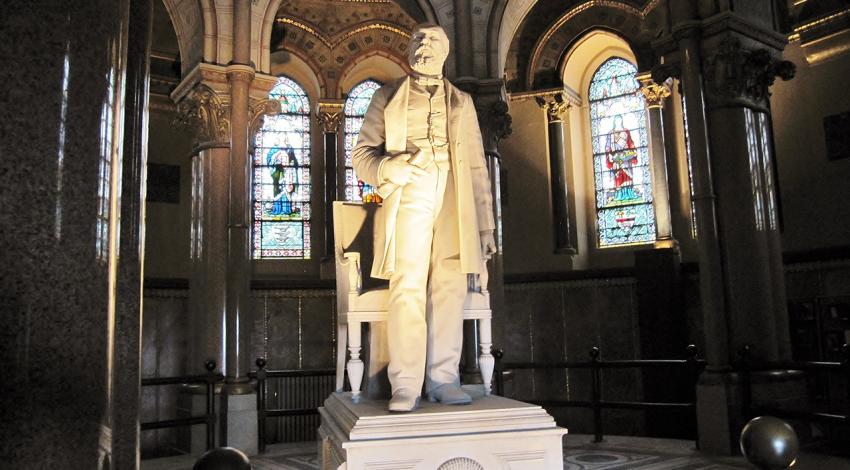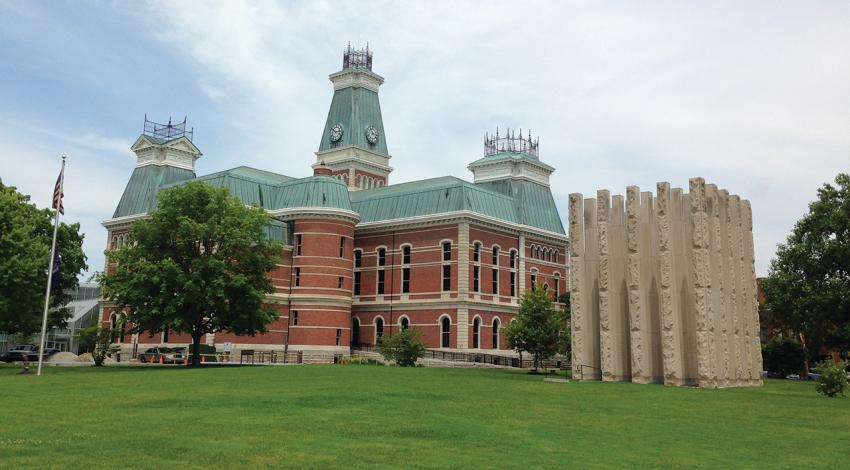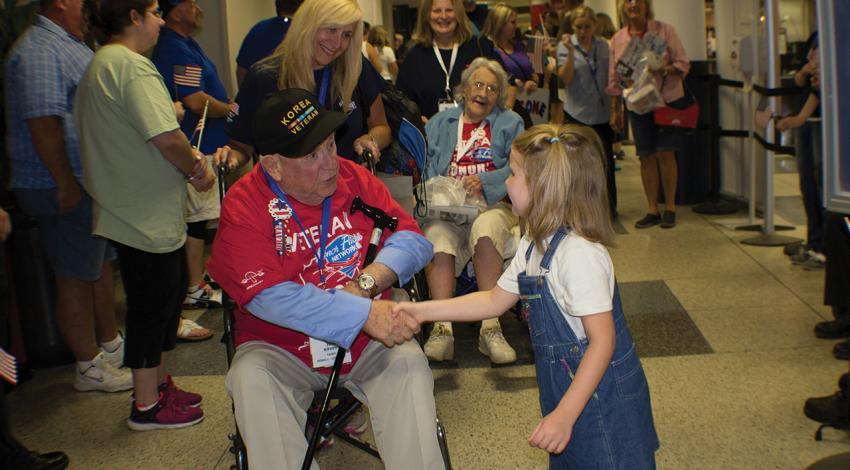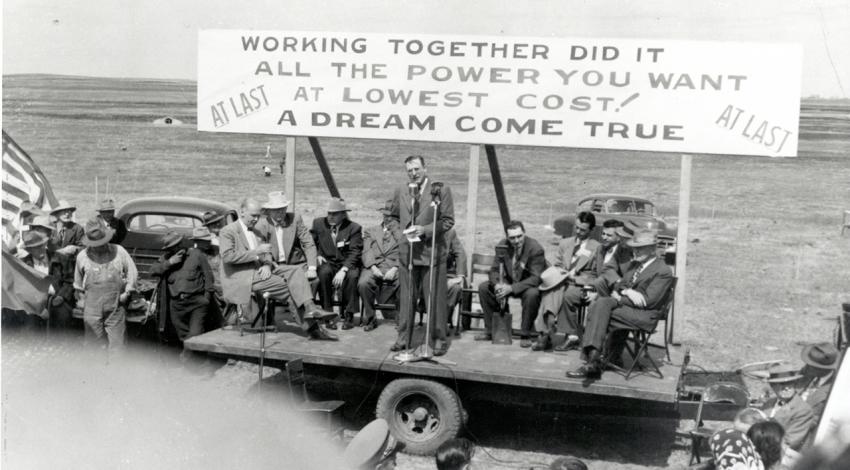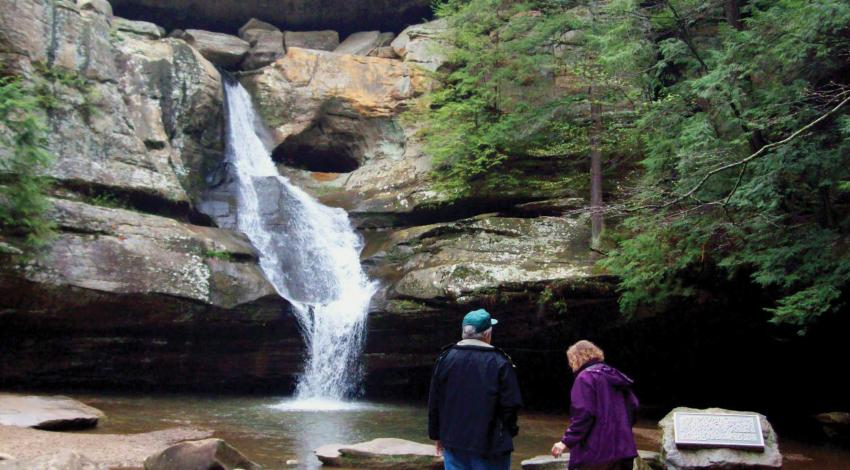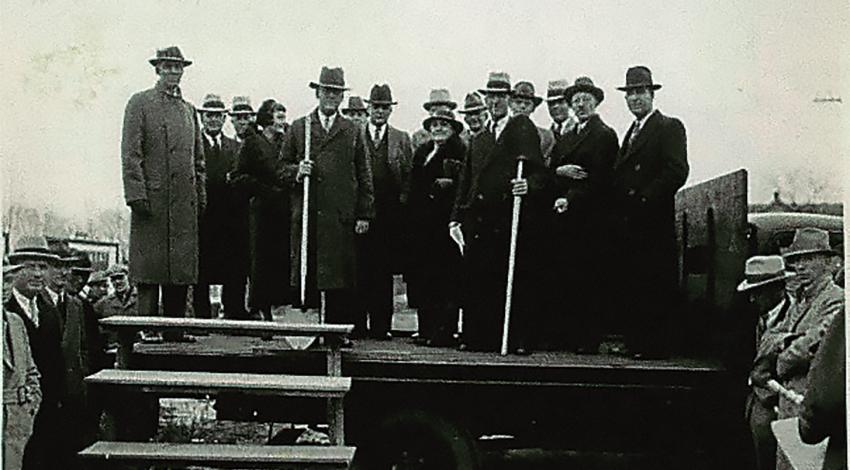The 30 or so therapy horses of Seven Oaks Farm may be little, but they have a big impact. Owner Lisa Moad brings the horses around to more than 50 care facilities and numerous Ronald McDonald houses to bring comfort to the residents and guests, and joins with several police departments to help with community and anti-bullying efforts.
Features
Head to Splatter Park near Mt. Gilead on a crisp, fall day, or pre-spring, before trees bud, and you’ll almost always find at least a little company. By summer, though, you’ll join as many as 600 other paintball warriors at a time looking to splatter their foes.
Location: On the east side of Cleveland in Lake View Cemetery.
Provenance: Founded in 1869, Lake View Cemetery was among the nation’s first garden-style cemeteries, and President James A. Garfield, who was born and raised near Cleveland, had expressed his desire to make its scenic grounds his final resting place. Shortly after his inauguration, Garfield was shot by a disappointed office-seeker and lingered for two months before dying on Sept. 19, 1881.
When Americans conjure a place called “Columbus,” many imagine Ohio — home of The Ohio State University and its legions of Buckeye football fans.
There is, however, another Columbus not too far away — west across the state line to just south of Indianapolis. While its population is only about 45,000, the town enjoys an outsized reputation as a modern architectural Mecca.
Jeremy Warnimont and his cousin Jake, both linemen at Tricounty Rural Electric Cooperative, based in northwest Ohio, were coming home from a long day of training on transformer rigging near Columbus, when they saw a young girl flip her all-terrain vehicle (ATV) in a nearby field. The vehicle landed on top of her.
“She was trying to jump a dirt hill, but didn’t make it,” Jeremy says. “When I got to her, she was non-responsive. Jake called 911 and we stabilized her until the first responders arrived.”
It’s a little-known fact that several Ohio agricultural cooperatives — livestock producers, dairy farmers, and crop associations — can trace their roots to the Ohio Farm Bureau Federation. The same holds true for Ohio’s Electric Cooperatives (OEC) members.
Buckeye Chuck, Ohio’s official weather-prognosticating groundhog, does not live what anyone would consider a tough life; after all, he’s called upon to work only one day a year.
But oh, that one day: Groundhog Day, February 2 — the day the entire world watches with bated breath to see what he sees when he comes out of his den.
When it comes to adopting new technology, electric cooperatives are David beating Goliath.
“The smaller size of co-ops allows us to be more nimble because we have fewer consumers,” says Pat O’Loughlin, president and CEO of Ohio’s Electric Cooperatives, the wholesale power supplier and trade association for the 24 co-ops serving the state. “We can try new things and deploy them faster than some big utilities.”


